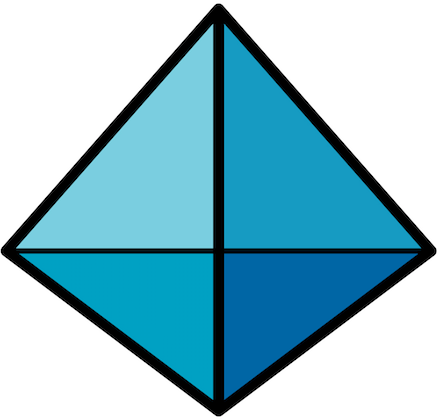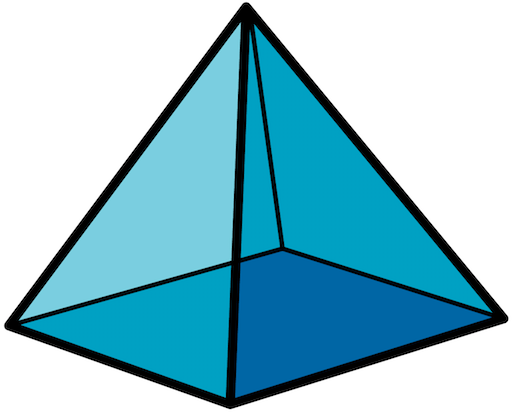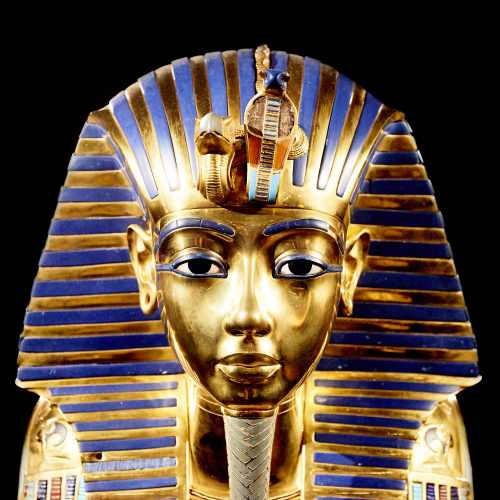
An archeologist was digging around the pyramids of Ancient Egypt. He discovered a mummy covered in chocolate and nuts.
On further investigation the mummy was identified as Pharaoh Roche.
This is a clue to our topic.
We are going to look at the surface area of pyramids here.
Surface area is the area of each face of the pyramid added together.

Before we are ready to go, there are a few things to remember:
Area of a square = base x height
Area of a rectangle = base x height
Area of a triangle = base x height ÷ 2
Example 1:

This pyramid has a side length of 4 cm and its height is 5 cm.
To find the surface area of this square-based pyramid:
1. Calculate the area of the base: 4 x 4 = 16 cm²
2. Find the area of one of the triangular sides: 4 x 5 ÷ 2 = 10 cm²
3. There are four sides to the pyramid so: 10 x 4 = 40 cm²
4. Add the total area of the sides to the area of the base: 16 + 40 = 56 cm²
Example 2:

This triangular-based pyramid has base 6 cm and height 8 cm.
To find the surface area of this triangular-based pyramid:
1. Calculate the area of the base: 6 x 8 ÷ 2 = 24 cm²
2. There are four sides to the pyramid (the base and three sides) so: 24 x 4 = 96 cm²
Example 3:

The base of this pyramid has sides of 5 cm and 6 cm. The height of the pyramid is 6 cm.
To find the surface area of this rectangular-based pyramid:
1. Calculate the area of the base: 5 x 6 = 30 cm²
2. Find the area of the triangle with the base of 5 cm: 5 x 6 ÷ 2 = 15 cm²
3. The face opposite has the same area so multiply that by 2: 15 x 2 = 30 cm²
4. Now find the area of the triangle with the base of 6 cm: 6 x 6 ÷ 2 = 18 cm²
5. The face opposite has the same area so multiply that by 2: 18 x 2 = 36 cm²
6. Finally, add all your answers together: 30 + 30 + 36 = 96 cm²

Where do Pharaohs like to eat?
Pizza Tut
Hopefully, this has made you smile as you start the activity.








